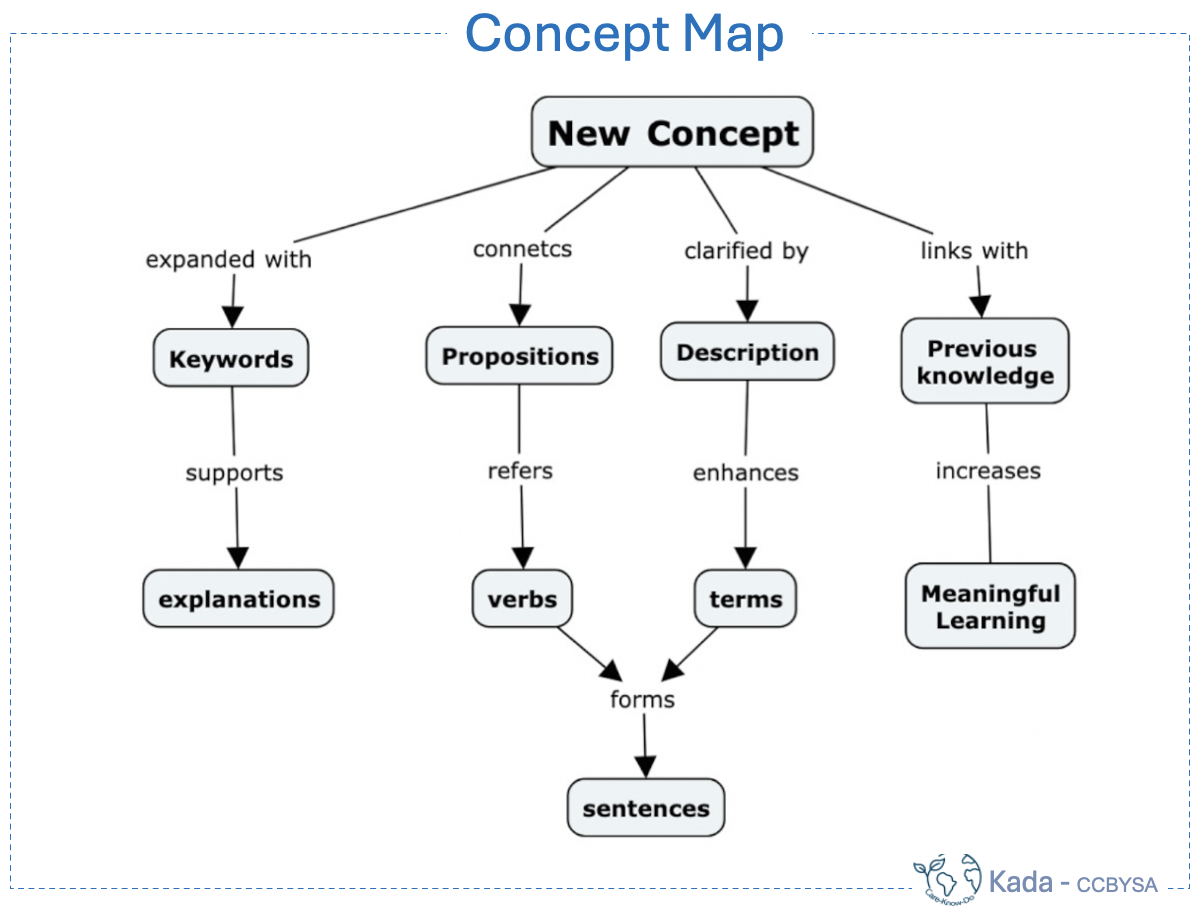Concept mapping is a method for describing meanings created in the 70s by research educator Joseph Novak.
This technique helps learners build knowledge supported by schemes of concepts and propositions.

How can we create a concept map?
1. Start with the concept in the top center.
2. Expand with keywords that provide explanations.
3. Connect with lines, adding propositions (for example, verbs).
4. All connections must contain a description.
5. Concepts and propositions can be read as sentences.
6. Review the map from the top down for conciseness.
In what ways can AI be used for concept mapping to acquire knowledge?
AI apps can be useful in various ways, such as taking notes, analyzing readings, building vocabulary, providing explanations, conducting thematic analysis, and more.
Our studies show that a key benefit for learners using AI mapping tools is the ability to integrate their pre-existing knowledge with new information generated by AI, supported by critical thinking. This approach can assist students in establishing a solid foundation based on their needs and prompts, with support from teachers.
How AI can be used for acquiring knowledge with Concept Maps?
The following example shows a concept map about learners’ mental health and wellbeing, created using Mymap.AI, Cmap Cloud Tools, and Perplexity.AI. The AI was also used to check the latest references and assess the map. Three categories were selected: physical health, mental health, and social-emotional learning. Teachers discussed the references and used AI to explore categories and key concepts to increase awareness about the topic.
More details:
Okada, Alexandra (2024). Knowledge Cartography for Young Thinkers: Sustainability Issues, Mapping Techniques and AI Tools. Advanced Information and Knowledge Processing, 1 (1). Switzerland: Springer (In Press).
URL: https://link.springer.com/book/9783031546761
Download peer-reviewed copy: https://oro.open.ac.uk/95849/